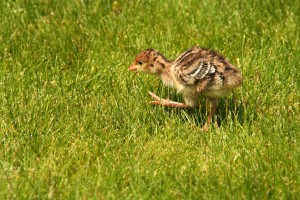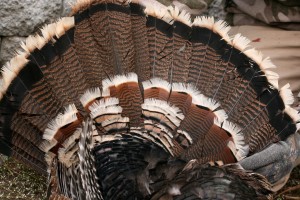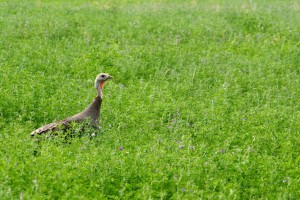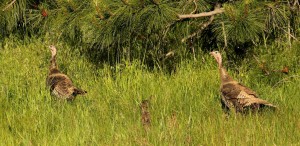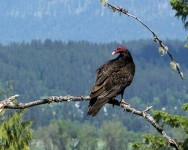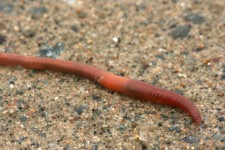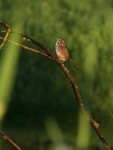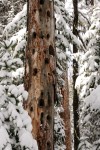Thanksgiving brings turkeys into the spotlight which usually is detrimental to them. So here are 25 turkey tidbits to ponder while your turkey is cooking in the oven.
- A male turkey is a tom, a female turkey is a hen and baby turkeys are called poults. Juvenile males are called jakes. A group of turkeys is called a flock.
- Male turkeys are also called gobblers because of the “gobble” call they use to announce themselves to females. The gobble can be heard up to a mile away.
- Wild turkeys make fifteen different vocalizations, including a “purr”, “yelp”, “kee-kee” and a clicking noise made by the females.
- In addition to gobbling, toms impress hens by fanning their large tail, drooping their wings and strutting.
- An adult turkey is covered with 5,000 to 6,000 feathers in patterns called feather tracts. Most of the feathers exhibit a metallic glittering (iridescence) in colors of red, green, copper, gold and bronze. Toms are more colorful than hens.
- Toms have no feathers on their head while hens have a few feathers. A tom’s head and neck is colorful with a white forehead, blue face and red neck.
- Both toms and hens have a snood–the long, red appendage that dangles down over the beak.
- A hen notices the snood’s length on a tom because it is associated with the tom’s health.
- The red fleshy bumps that grow on the turkey’s head and upper neck are called caruncles.
- The long, black, hair-like feathers hanging from a tom’s chest is called a beard.
- The average beard length is nine inches. Beards grow about four inches every year but are regulated in length by the beard dragging on the ground.
- While beards are typically found on males, 10 to 20 percent of hens have beards.
- Both toms and hens are born with small button spurs on the backs of their legs. The hen’s spurs don’t grow.
- A tom’s spurs grow up to two inches and are used for fighting. The spurs grow with age and can be used to estimate age. Spurs consist of a bony core with a keratinous material (similar to our fingernails) covering the core.
- Besides the beard, spurs and head, a turkey’s gender can be determined from its droppings. Spiral-shaped droppings are left by toms while hens leave droppings shaped like the letter J.
- Hens commonly lay their eggs in another female’s nest and sometimes even a ruffed grouse’s nest.
- Male poults stay with the hen through fall while female poults stay with the hen until early spring.
- A turkey’s short wings enable it to burst into flight quickly but because they are heavy, turkeys can’t fly far. They can fly up to speeds of 55 mph and run 20 mph.
- Turkeys can glide up to a mile to evade danger.
- Turkeys fly into trees to roost at night.
- Turkeys mainly forage in early morning and in the afternoon before dusk.
- Turkeys are omnivorous. They primarily eat plant matter (acorns, nuts, seeds, buds, leaves, fruits and fern fronds) but they also eat ground-dwelling insects, frogs, snakes and salamanders. Poults eat berries, seeds and insects.
- Predators are numerous for turkey eggs and nestlings, including raccoons, skunks, foxes, opossums, birds, woodchucks, rodents, bobcats, and some snakes.
- Even though turkeys can see movement almost 100 yards away they don’t always escape predators, which include coyotes, bobcats, raccoons, mountain lions, golden eagles and great horned owls.
- But the primary predator for adult turkeys is humans, especially around Thanksgiving time. Enjoy your turkey.
Happy Thanksgiving!

